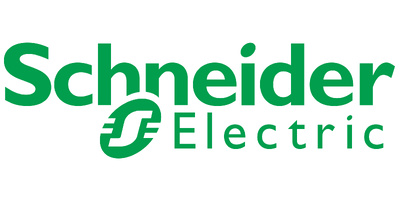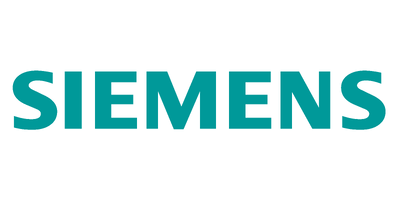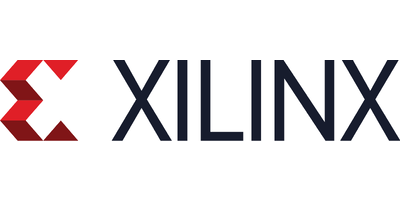EA OLEDS102-6
INCL CONTROLLER SSD1306B FOR SPI AND I²C
ELECTRONIC ASSEMBLY GmbH Fon: +49 (0)8105-7780 90 Issue: 04-2019
Zeppelinstraße 19 Fax: +49 (0)8105-7780 99
D-82205 Gilching e-Mail: info@lcd-module.de
Germany Web: www.lcd-module.de
Dimension 39x 41x3.3mm
FEATURES
102X64 DOTS (RELATES TO 8x17 CHARACTER OR 4x12 LARGE CHARACTER)
HIGH CONTRAST OLED DISPLAY
INTEGRATED CONTROLLER SSD1306B
SPI INTERFACE: MOSI, CLK, CS, D/C
I²C INTERFACE: SDA, SCL
WIDE TEMPERATURE RANGE (TOP -40°C - +80°C)
NO MOUNTING REQUIRED: JUST PUT INTO PCB
3 VERSIONS (WITH / W.O. POLARISOR AND PROTECTION GLASS) IN VARIOUS COLORS)
FAST RESPONSE TIME, NO AFTERGLOW
ORDERING CODES
GRAPHIC 102x64, yellow, black background, incl. protection glass EA OLEDS102-6GGA
GRAPHIC 102x64, yellow, black background, w./o. protection glass EA OLEDS102-6LGA
GRAPHIC 102x64, white, black background, w./o. protection glass EA OLEDS102-6LWA
WITH A MINIMUM ORDER QTY. OF 10,000 PCS.
GRAPHIC 128x64, with Polariser (Standard) EA OLEDS102-6LXA
X: G = Yellow
B = Blue
R = Red
ACCESSORIES
TEST BOARD WITH USB-INTERFACE EA 9781-1USB
SOCKET 4.8MM HOCH (2 PCS. ARE REQUIRED) EA FL-14P
TOUCHPANEL, 4-WIRE ANALOGUE SELF-ADHESIVE EA TOUCH102-1
*)
TOUCHPANEL, PCAP, SELF-ADHESIVE EA TOUCH102-17C1
ZIFF CONNECTOR FOR TOUCH, BOTTOM CONTACT EA WF100-04S
ZIFF CONNECTOR FOR PCAP TOUCH, BOTTOM CONTACT EA WF100-06S
*)
ONLY IN COMBINATION WITH EA OLEDS102-6GGA.
EA OLEDS102-6
Printing and typographical errors reserved. Page 2
ELECTRONIC ASSEMBLY reserves the right to change specifications without prior notice.
EA OLED SERIES
With its EA OLED series ELECTRONIC ASSEMBLY launched worldwide the first display family with OLED-
technology for direct mounting and soldering. In comparison to standard displays there’s no FFC/FPC
cable/connector that may lose contact, this OLED series will be soldered directly or put into a standard 2.54
mm precision socket.
It is designed for compact handheld equipment and provides a lot real advantages:
- Extreme compact with a large viewing area
- Super flat with 2.4 mm (without frontal protection glass)
- SPI and I²C interface
- Simple mounting with direct soldering
- Ex stock available from 1 pc. off
- Long life time (>50,000h for yellow)
- Wide temperature range (-40..+80°C)
- Fast response time (10µs), no afterglow
VERSIONS
The EA OLEDS102-6 is available in 3 different versions:
EA OLEDS102-6GGA / Allround
This module is perfect for rough environment. An additional frontal glass protects the display against scratch,
shock and UV light. Thanks to its integrated polariser there’s no need for an additionally smoked glass.
EA OLEDS102-6LGA and -6LWA / Flat
This module is the standard module and does fit for the most applications. The flat design (2.4 mm) makes
the display perfect for smallest equipment. The background is always deep black for best contrast.
COLORS (CUSTOM MADE)
The standard colors are yellow and white.
The flat version EA OLEDS102-6LGA is on customers request available in 3 more colors. The minimum order
quantity is 10,000 pcs., lead time is about 20 weeks. Samples are available on request.
Interface and software are 100% compatible. The yellow color provides highest brightness and longest life
time.
EA OLEDS102-6LEA
EA OLEDS102-6LRA
EA OLEDS102-6LBA
EA OLEDS102-6
Printing and typographical errors reserved. Page 3
ELECTRONIC ASSEMBLY reserves the right to change specifications without prior notice.
APPLICATION EXAMPLES
4 wire SPI, disabled charge pump 4 wire SPI single supply 3.3V
3 wire SPI, disabled charge pump 3 wire SPI single supply 3.3V
I²C (0x78), disabled charge pump I²C (0x78) single supply 3.3V
EA OLEDS102-6
Printing and typographical errors reserved. Page 4
ELECTRONIC ASSEMBLY reserves the right to change specifications without prior notice.
POWER SUPPLY GENERATOR
Voltage converter 3.3V-12 V (FAN5331, LT1935)
EA OLEDS102-6
Printing and typographical errors reserved. Page 5
ELECTRONIC ASSEMBLY reserves the right to change specifications without prior notice.
DATA TRANSFER 4-WIRE SPI (8 BIT)
Data transmission for SPI is
unidirectional, that means that
data can only be written,
there’s no data read option.
Selection for writing data or
command is done with the
D/C line. A busy check is not
necessary at all. Clock rate
may be up to 10 MHz. Data
transmission is based on SPI
mode 3, MSB first. For more
details please refer to the
controllers data sheet SSD1306B.
DATA TRANSFER 3-WIRE SPI (9 BIT)
Data transmission for SPI is
unidirectional, that means
that data can only be written,
there’s no data read option.
Selection for writing data or
command is done with the
first bit of the 9 bit data
transfer. A busy check is not
necessary at all. Clock rate
may be up to 10 MHz. Data transmission is based on SPI mode 3, MSB first (9 bit). For more details please
refer to the controllers data sheet SSD1306B.
DATA TRANSFER I²C
The I²C mode provides a bi-directional data transmission: That means that data can be written and read. With
the pin SA0 the I²C address can be changed (L: 0x78 or 0x3C, H:0x7A or 0x3D). So up to 2 displays may be
driven on 1 bus. The clock rate may be up to 400 KHz. Please make sure when defining the pull-up resistors
that the internal resistance of the display is 600..1000 . This affects the low level when reading data and
ACK bit.
Attention: When reading data, after the command for page- or column address there need to be a dummy
read (discard the first byte).
Control byte: Co (Continuation bit) = 0 Display data do follow; 1 refer D/C bit
EA OLEDS102-6
Printing and typographical errors reserved. Page 6
ELECTRONIC ASSEMBLY reserves the right to change specifications without prior notice.
GRAPHIC RAM
The EA OLEDS102-6 comes with an integrated display RAM. Each byte represents 8
dots. For more details please refer to the controllers data sheet SSD1306B, available
on our website at
https://www.lcd-module.de/fileadmin/eng/pdf/zubehoer/SSD1306B_1.1.pdf.
COMMAND TABLE (ABSTRACT)
This is a collection of the most important commands. The data sheet SSD1306B
provides the full list plus a detailed description.
Command D/
C
Command Code Description
Hex D7 D6 D5 D4 D3 D2 D1 D0
Contrast
Control
0
0
81
7F
1
A7
0
A6
0
A5
0
A4
0
A3
0
A2
0
A1
1
A0
Double byte command to select 1
out of 256 contrast steps. Contrast
increases as the value increases.
Display
On / Off
0 AE/
AF
1 0 1 0 1 1 1 X0 X0=0: Display OFF (sleep mode)
(RESET)
X0=1: Display ON in normal mode
Set
Column
address
0
0
0
21
0
7F
0
A7
B7
0
A6
B6
1
A5
B5
0
A4
B4
0
A3
B3
0
A2
B2
0
A1
B1
1
A0
B0
Setup column start and end
address
A
[7:0] : Column start address,
range : 0-127d, (RESET = 0)
B[7:0]: Column end address, range
: 0-127d, RESET = 127)
Note: This command is only for
horizontal or vertical addressing
mode.
Set Page
address
0
0
0
22
0
7
0
X
X
0
X
X
1
X
X
0
X
X
0
X
X
0
A2
B2
1
A1
B1
0
A0
B0
Setup page start and end address
A[2:0] : Page start Address, range
: 0-7d, (RESET = 0)
B[2:0] : Page end Address, range :
0-7d, (RESET = 7)
Note: This command is only for
horizontal or vertical addressing
mode.
Display
Start Line
0 40
–
7F
0 1 A5 A4 A
3 A
2 A
1 A
0 Set display RAM display start line
register from 0-63 using
X5X3X2X1X0.
Display start line register is reset to
0 during RESET.
Segment
remap
0 A0/
A1
1 0 1 0 0 0 0 X0 X0=0: column address 0 is mapped
to SEG0 (RESET)
X0=1: column address 127 is
mapped to SEG0
Com
output
scan
direction
0 C0/
C8
1 1 0 0 X3 0 0 0 X3=0: normal mode (RESET) Scan
from COM0 to COM[N –1]
X3=1: remapped mode. Scan from
COM[N-1] to COM0
Where N is the Multiplex ratio
RAM Data 1 XX D7D6 D5 D4D3D2D1D0D7-D0 is written to RAM.
EA OLEDS102-6
Printing and typographical errors reserved. Page 7
ELECTRONIC ASSEMBLY reserves the right to change specifications without prior notice.
INITIALISATION EXAMPLE - SINGLE SUPPLY 3.3V
voidinit_OLEDS102(void)
{
send_command(0x40);//SetDisplaystartline
send_command(0xA0);//BottomViewnoSegmentremap
send_command(0xC0);//BottomViewCOMscandirectionnormal
send_command(0x2E);//StartColumnAddress
send_command(0x8D);send_command(0x95);//SwitchChargePump(9V)
send_command(0x20);send_command(0x02);//SetMemoryAddressMode
send_command(0x81);send_command(0xFF);//SetBrightness
send_command(0xD5);send_command(0x40);//SetDisplayClockDivide
send_command(0xD9);send_command(0xF1);//SetPrechargePeriode
send_command(0xAD);send_command(0x30);//SetInternalRef
send_command(0x21);send_command(0x0D);send_command(0x72);//SetColumnAddress
send_command(0x22);send_command(0x00);send_command(0x3F);//SetPageAddress
send_command(0xAF); //Displayon
}
ACCESSORY: SOCKET EA FL-14P
Using a 14-pin socket makes the display replaceable and
adapts the height. Those socket may also be soldered
automatically by wave soldering or reflow process. Each display
requires 2 pcs.
ACCESSORY: ZIFF CONNECTOR
EA WF100-04S
The ZIFF connector matches perfect to the touch panel
EA TOUCH128-1. It provides 4 pins with 1.0 mm pitch.
Connection is bottom contact.
Top contact version is called EA WF100-04T.
EA OLEDS102-6
Printing and typographical errors reserved. Page 8
ELECTRONIC ASSEMBLY reserves the right to change specifications without prior notice.
ACCESSORY: TOUCHPANEL EA TOUCH102-1
As an accessory there is an analogue touchpanel available. It
comes with a self-adhesive glue on its rear side. Connection is
done via FFC, pitch 1.0 mm. Any standard ZIFF connector can
be used (e.g. EA WF100-04S). Bending radius is minimum 5
mm. Interfacing to a processor can be either done by an external
touch panel controller or with a controller that is featured with
analogue input. The touch panel is similar to a potentiometer:
connecting a voltage of e.g. 3.3 V to the pins Top-Bottom makes
it possible to read out a voltage on pin Left or Right which is
linear to the Y-coordinate of the pressed point. The X-coordinate
will result when the
voltage will be
supplied to Left-Right
and measurement is
done at Top or
Bottom. The pinout of
the connecting cable
is shown in the
drawing. For
connection there is a ZIF connector with pitch 1 mm, e.g. EA
WF100-04S.
Only in combination with the EA OLEDS102-6GGA.
TOUCH PANEL EA TOUCH102-17C1 (PCAP, CAPACITIVE)
As an accessory we provide a suitable, capacitive touch panel (PCAP). It comes
already with controller (GT5663) and integrated I²C bus. It supplies the
coordinates in double resolution 204x128. The line INT shows, if data are
available to be read out. The I²C bus address is 0xBA (0x5D). For connection
there is a ZIF connector with pitch 1.0 mm, e.g. EA WF100-06S.
Specification
Value min max Unit
Top-Bottom 100 400 Ω
Left-Right 400 1000 Ω
Voltage 3 12 V
Current 5 25 mA
Linearity 1,5 %
Force 45 65 g
Contact Bounce 5 10 ms
To
p
. -20 +60 °C
TStor. -20 +70 °C
Transmission 75 85 %
Lifetime 100000 Cycles
Pinout
Pin Name Description
1 SCL Int. 4k7 Pull-up
2 SDA Int. 4k7 Pull-up
3 VDD H
4 RES L
5 INT Internal Pull-up
6 GND L
EA OLEDS102-6
Printing and typographical errors reserved. Page 9
ELECTRONIC ASSEMBLY reserves the right to change specifications without prior notice.
SPECIFICATION
Unless otherwise specified, VSS = 0V , VDD = 1.8 - 3.3V ( Ta = 25
)
Value Condition min typ max Unit
Operating Temperature -40 +80 °C
Storage Temperature -40 +80 °C
Storage Humidity <40°C 90 %RH
Operating Voltage VDD
logic supply 1.8 3.0 3.3 V
Operating Voltage VCC
OLED supply
12.5 13.0 V
High Logic input level 0.8 x VDD
Low Logic input level 0.2 x VDD V
Power Supply VCC1)
All Pixel off 0,5 mA
Demo picture2) 13 mA
All Pixel on 32 mA
1) VCC= 12V, initialization 0x81,0xFF / 0xD5,0x40 / 0xD9,0x44 / 0xDB,0x20
2) Demo Picture:
OPTICAL DATA
Item Symbol Condition min typ max Unit
View Angle (V)θ CR≧2000 160 170 deg
(H)φ CR≧2000 160 170 deg
Contrast Ratio CR Dark Room 2000:1
Response Time T rise 10 µs
T fall 10 µs
Luminance1) L -6GGA / -6LGA 90 100 cd/m²
-6NGA 150 200 cd/m²
CIE 1931 x(Yellow) Dark Room 0.45 0.47 0.49
CIE 1931 y(Yellow) Dark Room 0.48 0.50 0.52
Operating
Life Time2)
yellow 50% chess board 50,000 hrs
white 20,000
1) VDD= 3.3V, incl. booster FAN5331 with VCC= 12.5V
2) Ta=25°C, operating life time is defined the amount of time until the luminance has decayed to 50% of the initial value.
Screen saving mode is rec ommended to extend life time
.
EA OLEDS102-6
Printing and typographical errors reserved. Page 10
ELECTRONIC ASSEMBLY reserves the right to change specifications without prior notice.
DIMENSIONS EA OLEDS102-6
PINOUT
Pin Symbol Pin Symbol Description
1 D0 SPI: SCLK, I²C: SCL 15 C2N Charge pump capacitor 1uF/10V
2 D1 SPI: MOSI, I²C: SDAin 16 C2P Charge pump capacitor
3 D2 SPI: NC, I²C: SDAout 17 C1P Charge pump capacitor 1uF/10V
4 18 C1N Charge pump capacitor
5 19 VBAT Power supply for charge pump
6 20 VCC OLED driving voltage
7 21 VCOMH Common deselect level.
(Internally regulated)
8 22 GND Ground
9 23 VDD Typ. 3.3 V logic power supply
10 24 BS0 00 = 4-Wire SPI; 01 = 3-Wire SPI
10 = I²C Interface
11 25 BS1
12 NC 26 CS Chip Select (active low)
13 NC 27 RES Reset (active low)
14 NC 28 D/C SPI (4-Wire): L=Command,
H=Data, I²C: SA0 (Address)
All dimensions are in mm
ATTENTION
handling precautions!
Note:
- OLED displays are generally not suited
for wave or reflow soldering. Temperatures
of over 80°C can cause lasting damage.
- The surfaces of the displays are protected
from scratching by self-adhesive protective
foil. Please remove before mounting



